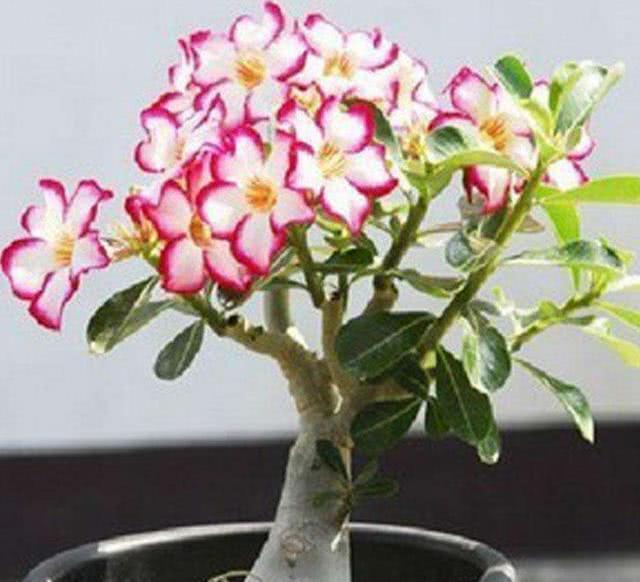If you want crab claw orchid, winter and spring flower branches, don't forget to do these things to it in autumn.

Crab claw orchid blossoms in winter and spring, dormancy in summer and bud pregnancy in autumn. Every winter, there are always flower friends who envy other people's crab claw orchids with full branches. in fact, whether they can blossom in winter and spring, the breeding management in autumn is particularly important! To do these things to it in time is the key to determine whether the crab claw orchid can blossom in winter and spring.
1. Change basin, change soil and trim. The weather has gradually turned cool, and the crab claw orchid, which has entered a dormant or semi-dormant state in summer, has gradually awakened and gradually entered a period of vigorous growth. If you find that the plant has grown up, the growth space in the basin and the nutrition of the basin soil is limited, it is necessary to change it to a larger pot at this time, re-soil cultivation. It is recommended to choose mud tile basin or plastic basin with good water permeability. Soil configuration is mainly humus soil, can add a small amount of garden soil to root, and then add a small part of river sand or perlite to increase water permeability and air permeability. After planting, cut off the weak leaves in time to store nutrients for healthy branches and leaves. At the same time, put the plant in a cool and ventilated place, change the pot for one week, and it can be maintained normally.
two。 Fertilize. If your crab claw orchid does not need to change the soil, it is necessary to apply nitrogen, phosphorus and potassium nutritious compound fertilizer or rotten organic fertilizer to the plant for 2 or 3 times. To supplement the energy it needs to grow in autumn, at intervals of about 10 days. With an adequate supply of fertilizer, crab claw orchids will gradually grow new leaves, ready to bud and blossom. After the growth of new leaves, reduce the intake of nitrogen fertilizer, change to phosphorus and potassium fertilizer, plant roots can be irrigated with potassium dihydrogen phosphate every 7-10 days, combined with foliar spraying. On the one hand, it can promote flower bud differentiation, on the other hand, it can enhance the ability of disease resistance and cold resistance of plants.
3. Plenty of light. Whether the crab claw orchid can bask in the sun has always been controversial. Flower friends all know that flowering plants like light very much. Crab claw orchid is the same, although it is a flowering plant in winter and spring, but it likes the warm sunshine very much. Of course, the summer dormancy period must give it shade, and take cooling measures. Now the temperature has dropped below 30 ℃, and it is the most critical period of growth and budding of crab claw orchid, so scattered light can no longer meet its flowering needs, so it is necessary to give it a few hours of direct light every day. If the sun is too strong at noon, you can shade it properly and give it the morning and afternoon sun. Sufficient light is the prerequisite for the budding and flowering of crab claw orchid.
4. A normal watering and ventilated environment. The autumn crab claw orchid needs sufficient water supply, whether it is the peak period of branch and leaf growth or the stage of pregnant bud flowering. If there is as little watering in this period as in summer, it is bound to affect growth and flowering. Only when the potted soil is kept slightly wet and given a well-ventilated growth environment can the plant grow vigorously.
- Prev

What's the difference between watering flowers in the morning and at night? I never understood why plants are so hard to grow.
Watering flowers is very important, especially in summer, if the watering is not good, there will be a lot of problems, and even lead to direct death of flowers and plants! In fact, watering flowers is also very particular, deal with these details on the question...
- Next

The longer the stem of desert rose is, the thinner it is and less likely to blossom. The reason and the solution are here.
Desert rose plant shape is beautiful, the tree shape is simple and vigorous, the flowering period is from May to December every year, and the flower is as red as a rose, which is deeply loved by many flower friends. When families raise desert roses, some flower lovers often propose that the longer the stem, the thinner the stem, and.
Related
- Wuhan Hospital Iron Tree Blooming Result Was Instantly Frightened by the Gardener Master
- Which variety of camellia is the most fragrant and best? Which one do you like best?
- What is the small blue coat, the breeding methods and matters needing attention of the succulent plant
- Dormancy time and maintenance management of succulent plants during dormancy
- Minas succulent how to raise, Minas succulent plant pictures
- What are the varieties of winter succulent plants
- How to raise succulent plants in twelve rolls? let's take a look at some experience of breeding twelve rolls.
- Attention should be paid to water control for succulent plants during dormant period (winter and summer)
- Watering experience of twelve rolls of succulent plants
- Techniques for fertilizing succulent plants. An article will let you know how to fertilize succulent plants.

